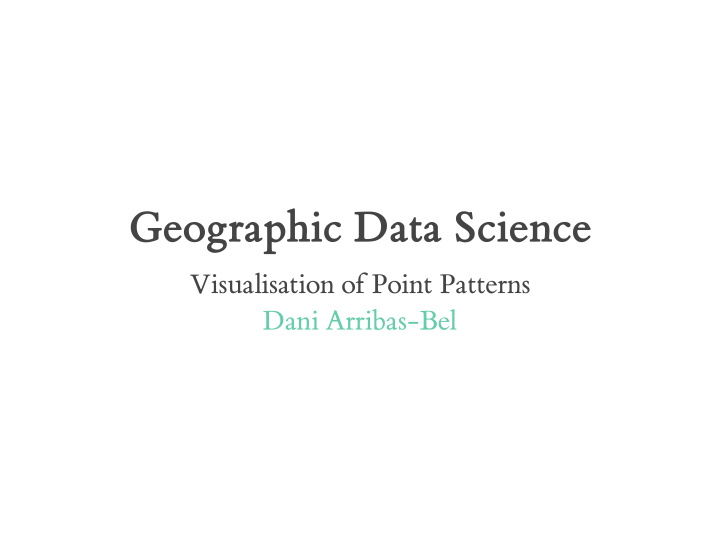



Geographic Data Science Visualisation of Point Patterns Dani Arribas-Bel
Visualization of PPs Three routes (today): One-to-one mapping ↔ “Scatter plot” Aggregate ↔ “Histogram” Smooth ↔ KDE
One-to-one
One-to-one Intuitive Effective in small datasets Limited as size increases until useless
One-to-one
Aggregation
Points meet polygons Use polygon boundaries and count points per area [Insert your skills for choropleth mapping here!!!] But , the polygons need to “make sense” (their delineation needs to relate to the point generating process)
Hex-binning If no polygon boundary seems like a good candidate for aggregation… …draw a hexagonal (or squared) tesselation !!! Hexagons… Are regular Exhaust the space (Unlike circles) Have many sides (minimize boundary problems)
But… (Arbitrary) aggregation may induce MAUP (see Block D) + Points usually represent events that affect only part of the population and hence are best considered as rates
Kernel Density Estimation
Kernel Density Estimation Estimate the (continuous) observed distribution of a variable Probability of finding an observation at a given point “Continuous histogram” Solves (much of) the MAUP problem, but not the underlying population issue
[ Source ]
Bivariate (spatial) KDE Probability of finding observations at a given point in space Bivariate version: distribution of pairs of values In space : values are coordinates (XY), locations Continuous “version” of a choropleth
A course on Geographic Data Science by Dani Arribas-Bel is licensed under a Creative Commons Attribution-ShareAlike 4.0 International License .
Recommend
More recommend